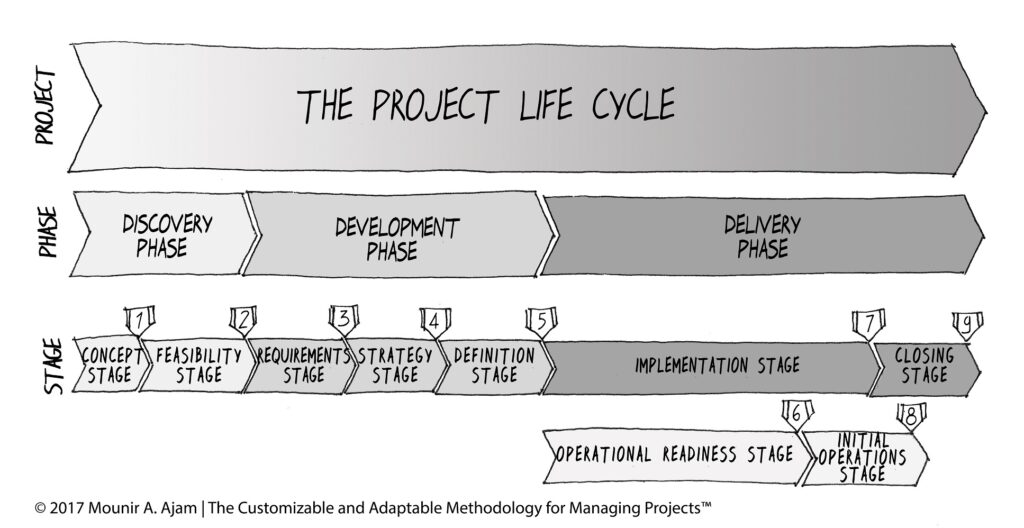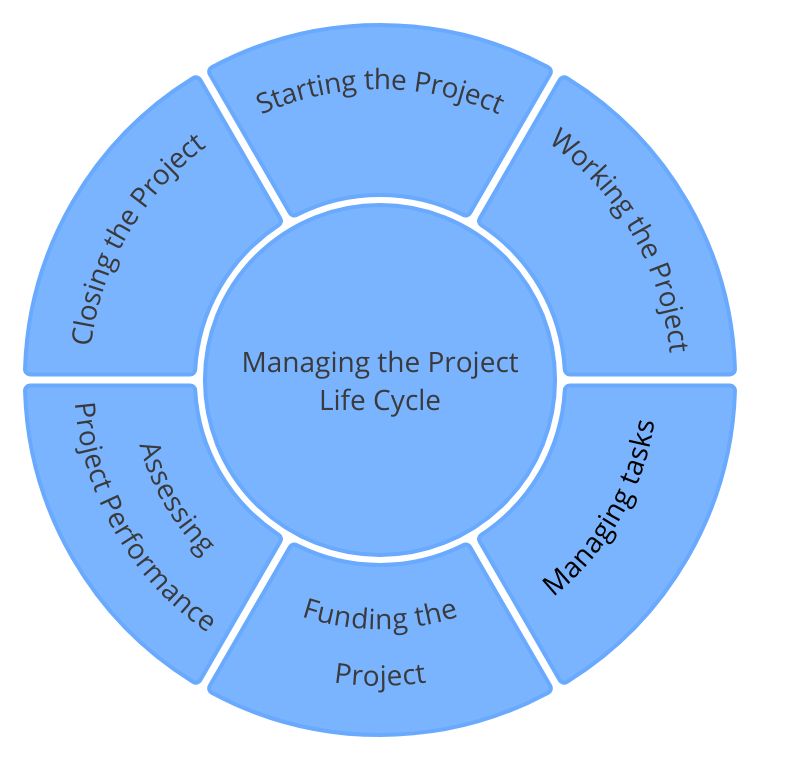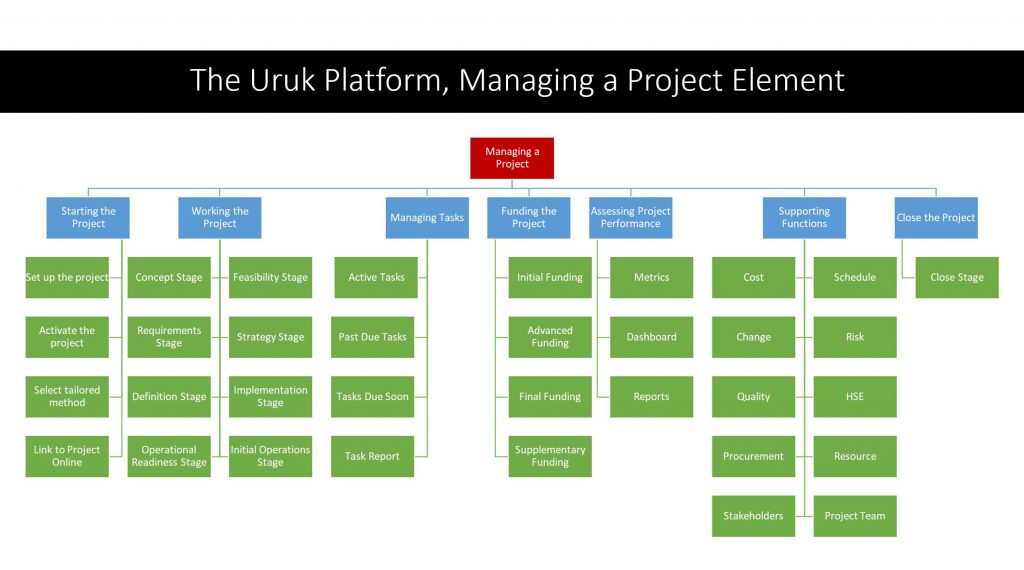I was talking with a friend about investing in The Uruk Platform. He does some work with government agencies, like ministries of transportations, oil & gas, and other entities that build “facilities.” Further, these government entities have highly defined specifications and requirements for every part of the project, like Design Management, Construction Management, etc. Therefore, would a project management methodological approach, like CAMMP and the Uruk Platform, work for them?
The Dilemma
He thought that because these “guys,” the ministries, do have fragmented “life cycles” and each “life cycle” might be considered a project, then a Concept to Closure or Concept to Success Project Life Cycle might not work for them. However, let us elaborate further, think of this scenario.
Project Life Cycle Scenario
- A strategic planning department might start the concept for a project,
- After early studies, if the project is approved, it might shift to a facilities planning department,
- Next would be the design department to conduct the design or manage an outsourced design agency,
- The next step would be engineering & construction as one phase or two separated stages,
- Finally, there is pre-commissioning, and ultimately operations.
In other words, a project transitions through multiple departments from start to end. However, it is also possible that in each department, there could be a Project Manager or team leader. Further, notice the diversity of these business units:
- Strategic planning (business),
- Facilities planning (business/engineering),
- Design (engineering),
- Construction, and
- Operations.
Would the Uruk Platform works?
Well,
- First, Uruk is based on CAMMP, The Customizable and Adaptable Methodology for Managing Projects™.
- Second, CAMMP considers the full project life cycle from concept to the END.
Consequently, would CAMMP & Uruk work for project owners where a project might transition between 3 to 5 departments from concept to success?
Absolutely, and it is as easy as 1, 2, 3 — well, not that easy, but …
The CAMMP PLC Scenario
Let us consider the above scenario, a government entity that is building a facility. However, now we use the CAMMP methodological approach. Please refer to the following image as you read.

Strategic Planning (The Discovery Phase)
First, assuming the project starts with strategic planning, that department should have a team leader. That team leader, or other staff, can start the project in Uruk. Please note that in Uruk, the team leader would be classified as a project manager. She will do the necessary work for the Discovery Phase (per the image). Also, all of the work would be documented in Uruk. Further, if there are historical data and similar projects in the archive, the discovery phase work can be expedited.
This is a business function.
Facilities Planning
If the project is approved to go beyond the discovery phase, it might shift to a facilities planning department.
This would be a business/conceptual engineering function.
At this point, there could be a project sponsor and possibly another person assigned as a project manager or team leader. The new PM will take over to lead the work across the requirements stage, per the CAMMP PLC. This would include exploring the stakeholders’ expectations, collecting requirements, clarifying the product vision, etc.
With Uruk, and all project information in the system, would not you think that the handover and transition between the team lead from the earlier phase to the new team lead would be easier?
Design Management
I skipped the strategy stage to shorten the article!
It is time for the design work, which could be performed internally or outsourced to a preliminary engineering service provider. There will be a Design Life Cycle if we like to use the term “life cycle.” It is possible that the PM (the one leading the requirements stage) could still be leading this work. However, it is also possible that we have another transition.
Before we forget, that is the Definition Stage in CAMMP (which means in the Uruk Platform).
Engineering & Construction
We are now in the Delivery Phase, Implement Stage. Once again, we are likely to have a transition and a new project manager. I lost count, is this the third or fourth PM?
Relevant Graphics – Uruk Platform
The following image, are the various functional centers in the Uruk Platform for managing a project across the stages.

The following is another image that expands on the previous one.

Closing Remarks
It would be great if we have one project manager from concept to success. However, the reality of these projects, with so many organizational functions (departments) involved, it is likely to have two or more PMs across the project life cycle. However, even if there is one, the amount of project information can be massive. Some of it could be lost in the transition or forgotten. However, if everything is in the Uruk Platform, then the chance of lost records is slim if non-existent.
Let me repeat!
With Uruk, and all project information in the system, would not you think that the handover and transition from one stage to another would be easier?
Further,
With the project archives and historical records in place, do not you think that all of the work across the stages (at least the management artifacts) would expedite the various actions in leading the project from concept to success?
One more comment!
The Uruk Platform would incorporate numerous tailored methods, each with its own customized project life cycle. Consequently, organizations and project managers do not have to recreate the wheel and develop methods. How much time and cost savings would that be?
Finally, can you imagine the business value and benefits that you can realize from this business–project management–operation integration? The expedited delivery of your product to market, the efficiency of managing the project, and other features?
The One Minute Pitch
This video is a one-minute pitch for investing in the Uruk Platform. Finally, click here to consider the equity crowdfunding investment opportunity.
